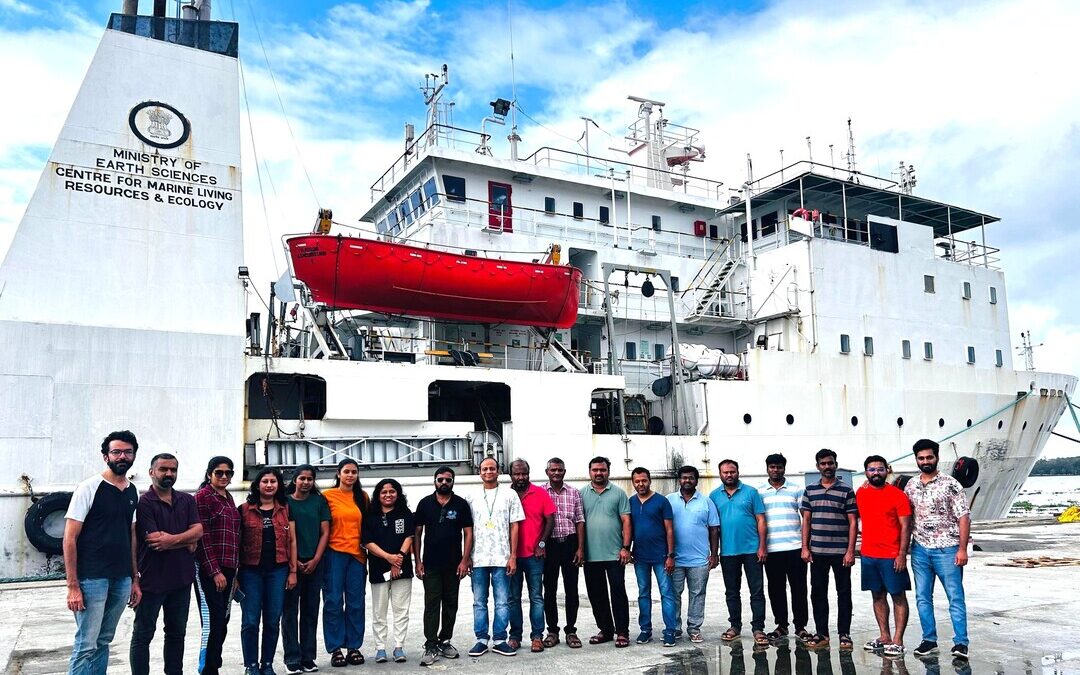India Launches Urgent Marine Study After Hazardous Cargo Spill off Kochi
Scientists launch an urgent ocean survey to assess ecological damage from a sunken cargo ship off the Kerala coast.
India has launched an emergency scientific expedition in the Arabian Sea to assess potential environmental damage after a cargo vessel carrying hazardous materials sank off the southern coast near Kochi earlier this month, officials said on Tuesday.
The Centre for Marine Living Resources and Ecology, under the Ministry of Earth Sciences, is leading the 10-day oceanographic research mission following the incident, which has raised serious ecological concerns.
The sunken vessel carried 643 containers, 13 of which were confirmed to hold toxic substances.
“The affected zone is one of the most biologically productive marine ecosystems in India. The mission is a rapid response to assess the damage and develop long-term strategies for recovery,” the Ministry of Earth Sciences said in a statement.
Targeted Assessment of Wreck Site
The research cruise, which set sail from Kochi on June 3, will operate in a loop route across the southeastern Arabian Sea, focusing on the wreck site located at 09°18.76’N and 076°08.12’E.
Sixteen research stations have been marked along two meridional transects, each spaced 10 nautical miles apart.
Using advanced oceanographic instruments, the team will monitor biogeochemical and ecological parameters in the area surrounding the sunken vessel.
This includes evaluating the movement of ocean currents that could disperse contaminants, and using long-range SONAR and split-beam echo sounders to detect any structural damage, oil leaks, or disruptions in marine life.
Comprehensive Sampling and Monitoring
Researchers will conduct extensive water and sediment sampling to analyze chemical and biological changes in the marine environment.
Key tests will include measurements of dissolved oxygen, chlorophyll, heavy metals, polyaromatic hydrocarbons, microplastics, and trace elements. The team will also study the health and distribution of plankton, fish larvae, and benthic fauna.
Underwater cameras, including a high-resolution “Big Eye” system, will be deployed to inspect the wreck site for signs of environmental stress or pollution.
Monsoon timing heightens risk
The operation takes place at a critical time, coinciding with the early monsoon period — an active breeding season for commercially important fish species, such as sardines, mackerel, and anchovies.
The coastal stretch from Kochi to Kanyakumari is a crucial spawning ground, and any ecological disruption could have profound consequences for marine biodiversity and local livelihoods.
“Given the timing and location, this incident poses a high risk to fishery resources and coastal communities that rely heavily on marine ecosystems,” the ministry added.
Data to guide policy and recovery
The expedition brings together experts in physical oceanography, marine chemistry, biology, and environmental toxicology.
Findings from the cruise will support ecological recovery planning and inform policy decisions affecting marine conservation, fisheries management, and disaster preparedness.
CMLRE stated that the mission aims not only to quantify immediate damage but also to establish a baseline for long-term monitoring in one of India’s most sensitive marine zones.
Nirmal Menon
Related posts
Subscribe
Error: Contact form not found.


